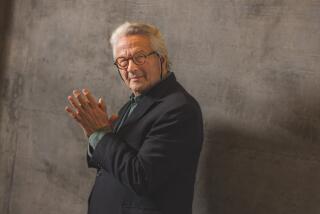Stanley Miller, 77; chemist was a pioneer in studying the origins of life
- Share via
Stanley Miller, the UC San Diego chemist who was the first to demonstrate that the organic molecules necessary for life could be generated in a laboratory flask simulating the primitive Earth’s atmosphere, died Sunday from heart failure in a hospital in National City. He was 77.
Miller had suffered a series of strokes since 1999 and had been living in a nursing home, according to his brother, Donald.
“Stanley Miller was the father of origin-of-life chemistry,” said marine chemist Jeffrey L. Bada of UC San Diego, a former graduate student of Miller’s. “And he was the leader in that field for many decades . It was the Miller experiment that almost overnight transformed the study of the origin of life into a respectable field of inquiry.”
When Miller began his work as a graduate student in late 1952, scientists had already been speculating for decades about how life could have arisen on the planet, but practical experiments had been few and unsuccessful.
He drew on the work of University of Chicago chemist Harold C. Urey, who had suggested in 1951 that the early Earth’s atmosphere contained methane, ammonia, hydrogen and water — and no oxygen.
Working in Urey’s laboratory, Miller placed the four gases in a closed system over a reservoir of water that simulated the early ocean. He heated the water to fill the system with water vapor and repeatedly passed an electrical discharge through the gas to simulate lightning.
Within weeks, he had shown that spontaneous reactions in the system produced 13 of the 21 amino acids — the essential components of proteins — required for life.
He published his findings May 15, 1953, in a two-page report in the journal Science. Urey left his name off the paper, because he feared that Miller would not get sufficient credit otherwise.
“I already have a Nobel Prize,” Urey reportedly said.
The late Carl Sagan described the experiments in Miller’s paper as “the single most significant step in convincing many scientists that life is likely to be abundant in the cosmos.”
When Miller presented his results at a prestigious seminar, physicist Enrico Fermi politely asked if it was known whether this kind of process could have actually taken place on the primitive Earth. Urey replied, “If God did not do it this way, then he missed a good bet.”
The results were widely reported in newspapers and magazines.
“The public’s imagination was captivated,” Bada said. “By the time the results were corroborated by an independent group three years later, the metaphor of the ‘prebiotic soup’ had found its way into comic strips, cartoons, movies and novels.”
Miller spent the better part of the next five decades extending his work and demonstrating that a variety of other crucial chemicals — including the pyrimidines found in ribonucleic acids and pantetheine, a precursor of a chemical called coenzyme Q — could be produced under similar conditions.
Miller’s experiments received a strong boost toward credibility Sept. 28, 1969, when a meteorite landed in Murchison, Australia. Analysis showed that the meteorite carried all of the organic chemicals found by Miller in his prebiotic soup, suggesting that they were easily formed under the conditions present in the solar system some 4.5 billion years ago.
But Miller’s ultimate goal, the creation of a living organism in a test tube, eluded him and other researchers.
“Making the amino acids made it seem like the rest of the steps would be very easy,” he said in a 1996 interview with Reuters. “It’s turned out that it’s more difficult than I thought it would be. It’s a series of little tricks. Once you learn the trick, it’s very easy. The problem is learning the trick.”
Miller’s results have never been questioned, but some of his underlying assumptions have been disputed. Some researchers have argued that the early atmosphere had a different composition than that predicted by Urey — although there is no strong evidence one way or another.
More recently, some scientists — such as German chemist Gunter Wachtershauser — have argued that life was more likely to have originated near submarine vents in chemical processes catalyzed by metals.
“I have a very simple response to that,” Miller said. “Submarine vents don’t make organic compounds; they decompose them,” because most of the crucial compounds are unstable at high temperatures.
Stanley Lloyd Miller was born March 7, 1930, in Oakland. His father was an assistant district attorney appointed by Gov. Earl Warren.
Miller studied chemistry at UC Berkeley, then received his doctorate from the University of Chicago in 1954. He spent a year at Caltech on a fellowship and five years at Columbia University before joining the newly formed San Diego campus of the University of California, where he spent the rest of his career.
In addition to his brother, Miller is survived by his companion, Maria Morris, and two nieces. No funeral will be held, but a memorial service is in the planning stages.
thomas.maugh@latimes.com






